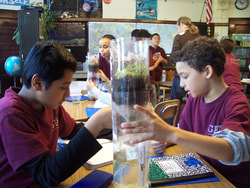Video Case Studies
|
The video case studies are intended to provide real-life examples of classroom instruction to practice using the ILSP tools. Each case study has various elements to help support understanding, including example video, initial observation forms, and post-observation forms. Some videos were recorded before the release of NGSS and were therefore aligned with the closest performance expectations and science practices.
|
Video |
Description |
|
|
|
|
|
